Anticipation in Squash
Ever wondered why elite squash players seem to move so effortlessly and still have so much more time on the ball than the rest of us?
One of the defining characteristics of expert performance is perceptual skill and probably the most essential perceptual skill in open skilled sports, particularly squash, is anticipation. It is the anticipatory skill of the elite squash player that gives him or her all that the extra time and it is arguably the lack of this anticipatory ability that prevents many club players from progressing to the next level.
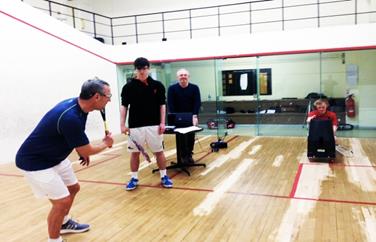
Photograph shows the experimental set-up from the study on anticipation in squash, undertaken as part of an MSc in Psychology of Sport and Exercise, by Henry Gillanders
A recent study by Henry Gillanders as part of an MSc in Sport and Exercise Psychology, provided some clues to the visual anticipation strategy of an elite squash player. The objective of the research was to identify the various visual cues used by an elite and a non-elite squash player, to assist him/her to extract information from performance environment and make predictions regarding the shot his opponent is going to play.
The research was a pilot study and limited in its sample size, however the findings were very clear. To summarize, the elite player used no ball tracking to predict the final outcome of an opponent’s shot, (questioning the advice given by most coaches to ‘keep your eye on the ball’!), he had a successful anticipation rate of 92.5%, and used most of the available time to extract visual information from the opponent’s racquet-head, head, shoulder, hips and leading leg, typically in that order.
All successful predictions were made before the opponent actually hit the ball, with an average response time of 178mm before ball contact. On one trial the prediction was made 360ms before the ball was struck by the opponent (that was when the opponent’s racquet was at the top of his back swing!).
1.
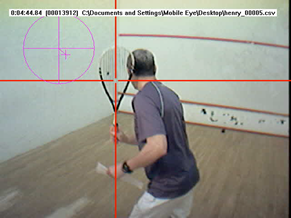
2.
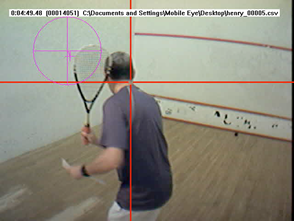
3.
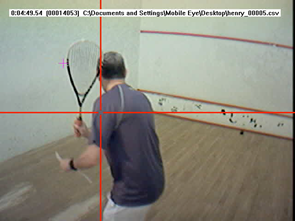
4.
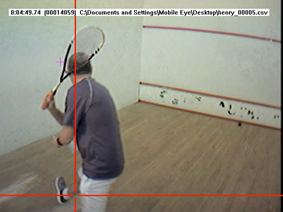
Photograph sequence above, showing stills taken from an ASL mobile eye-tracking registration system, demonstrating the elite players gaze pattern. The gaze moves through some of the key visual cues of the, racquet-head, head, shoulder and leading leg.
Anticipation is not a taught skill, but acquired by elite players through extensive and deliberate interaction with their sport “10,000 hours”!. It is hoped that by studying anticipation, that it will be possible to design training programmes to assist with the teaching and accelerate the acquisition of this vital skill in squash so that not only the elite players can benefit.
Acknowledgements
Thank you to Kieran Doherty, Michael Craig, Lewis Kirk, Jacob Guldbäck, Jeff Hearst, Lisburn Racquets Club and Ulster Squash for their assistance with this research.


